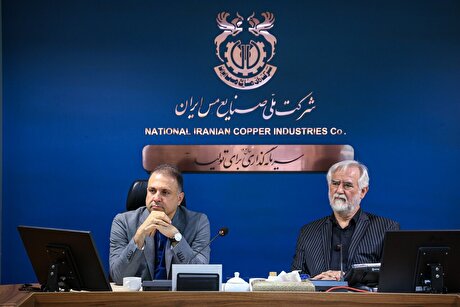
PSEEZ enjoys high potential for investment

As reported by Pars Special Economic Energy Zone Organization, in a meeting with Iraj Khorramdel, the head of the organization, Rahgozar mentioned interest of Belgian companies in developing economic relations and effective presence in the various industrial fields in Iran, and added: “The advantage of Pars Special Zone is considered as a good incentive mechanism for European companies.”
Earlier this month, Khoramdel said the organization is determined to boost investment attraction in the zone during the current Iranian calendar year (started on March 20).
“This year we are determined to attract investment in various industrial fields, fortunately, many domestic industries are interested in presence and investment in the zone,” he noted.
With more investment attracted in the South Pars projects, we will see a significant leap both in terms of job creation and in terms of production and national wealth,” he added.
PSEEZ, which is named Iran’s energy hub, is also home to the world’s largest gas reserve, South Pars gas field which Iran shares with Qatar in the Persian Gulf. The zone is the hub of Iran’s exports of major non-oil commodities that are gas condensate and petrochemicals.
Back in January, National Petrochemical Company (NPC) projects Manager Ali-Mohammad Bosaqzadeh said the company was planning on inaugurating 23 petrochemical projects in PSEEZ.
Emphasizing the need to accelerate the completion of development projects by utilizing the existing capacities in the country, the official said: "Currently, various projects are being developed throughout the country and having 23 major projects under development, Pars Special Economic Energy Zone has a special place in this regard.”
Located in the port city of Assaluyeh, PSEEZ is home to a number of petrochemical complexes that receive gas and gas condensate feedstock from the giant South Pars gas field, which Iran shares with Qatar in the Persian Gulf.
South Pars is the world’s largest gas field, covering an area of 3,700 square kilometers of Iran’s territorial waters in the Persian Gulf.
The giant field is estimated to contain a significant amount of natural gas, accounting for about eight percent of the world’s reserves, and approximately 18 billion barrels of condensate. The field is divided into 24 standard phases.


Trump weighs using $2 billion in CHIPS Act funding for critical minerals

Electra converts debt, launches $30M raise to jumpstart stalled cobalt refinery

Codelco cuts 2025 copper forecast after El Teniente mine collapse

Barrick’s Reko Diq in line for $410M ADB backing

Abcourt readies Sleeping Giant mill to pour first gold since 2014

SQM boosts lithium supply plans as prices flick higher

Pan American locks in $2.1B takeover of MAG Silver

Nevada army depot to serve as base for first US strategic minerals stockpile

Viridis unveils 200Mt initial reserve for Brazil rare earth project

Kyrgyzstan kicks off underground gold mining at Kumtor

Kyrgyzstan kicks off underground gold mining at Kumtor

KoBold Metals granted lithium exploration rights in Congo

Freeport Indonesia to wrap up Gresik plant repairs by early September

Energy Fuels soars on Vulcan Elements partnership

Northern Dynasty sticks to proposal in battle to lift Pebble mine veto

Giustra-backed mining firm teams up with informal miners in Colombia

Critical Metals signs agreement to supply rare earth to US government-funded facility

China extends rare earth controls to imported material

Galan Lithium proceeds with $13M financing for Argentina project

Kyrgyzstan kicks off underground gold mining at Kumtor

Freeport Indonesia to wrap up Gresik plant repairs by early September

Energy Fuels soars on Vulcan Elements partnership

Northern Dynasty sticks to proposal in battle to lift Pebble mine veto

Giustra-backed mining firm teams up with informal miners in Colombia

Critical Metals signs agreement to supply rare earth to US government-funded facility

China extends rare earth controls to imported material

Galan Lithium proceeds with $13M financing for Argentina project

Silver price touches $39 as market weighs rate cut outlook

















